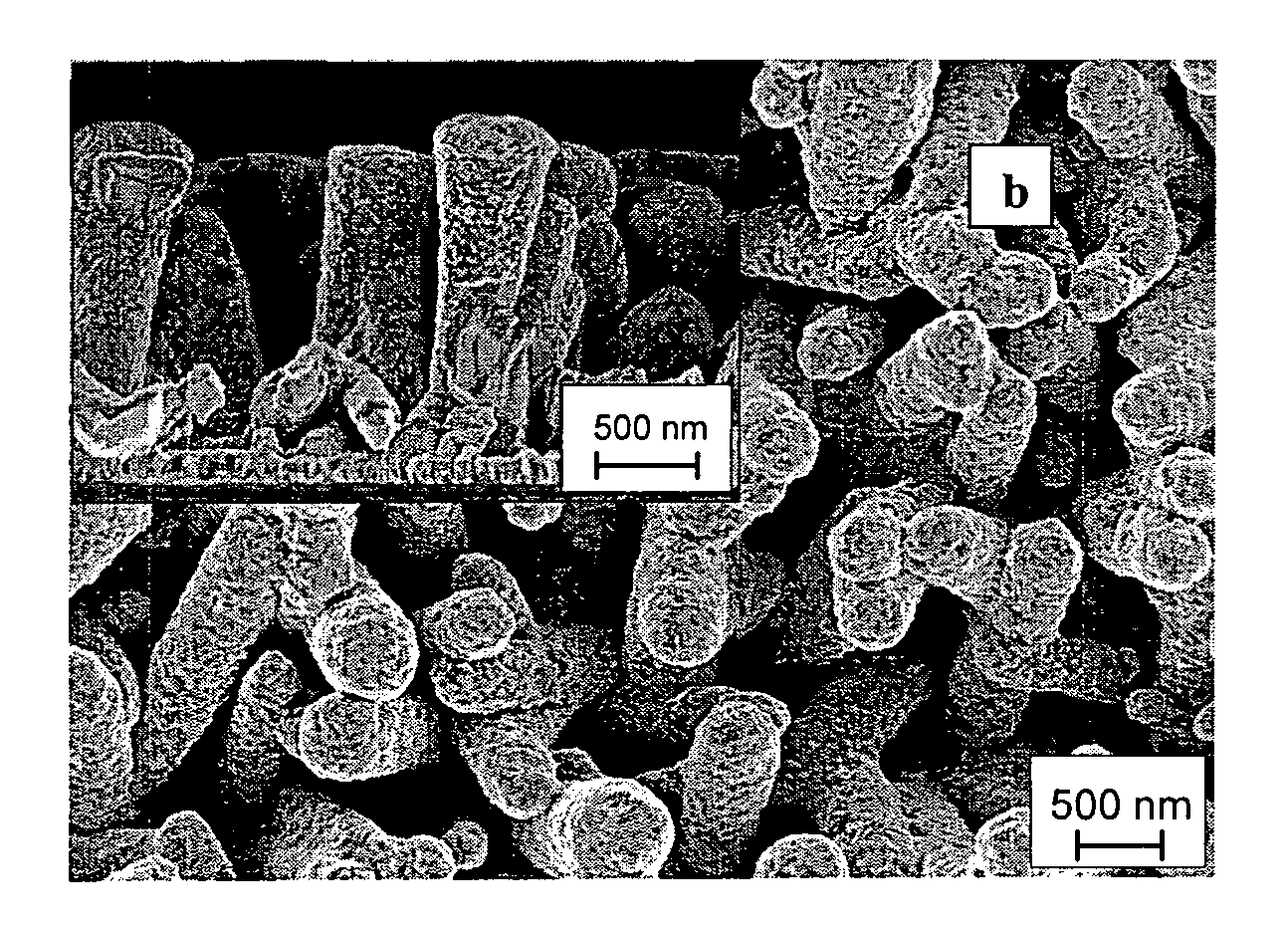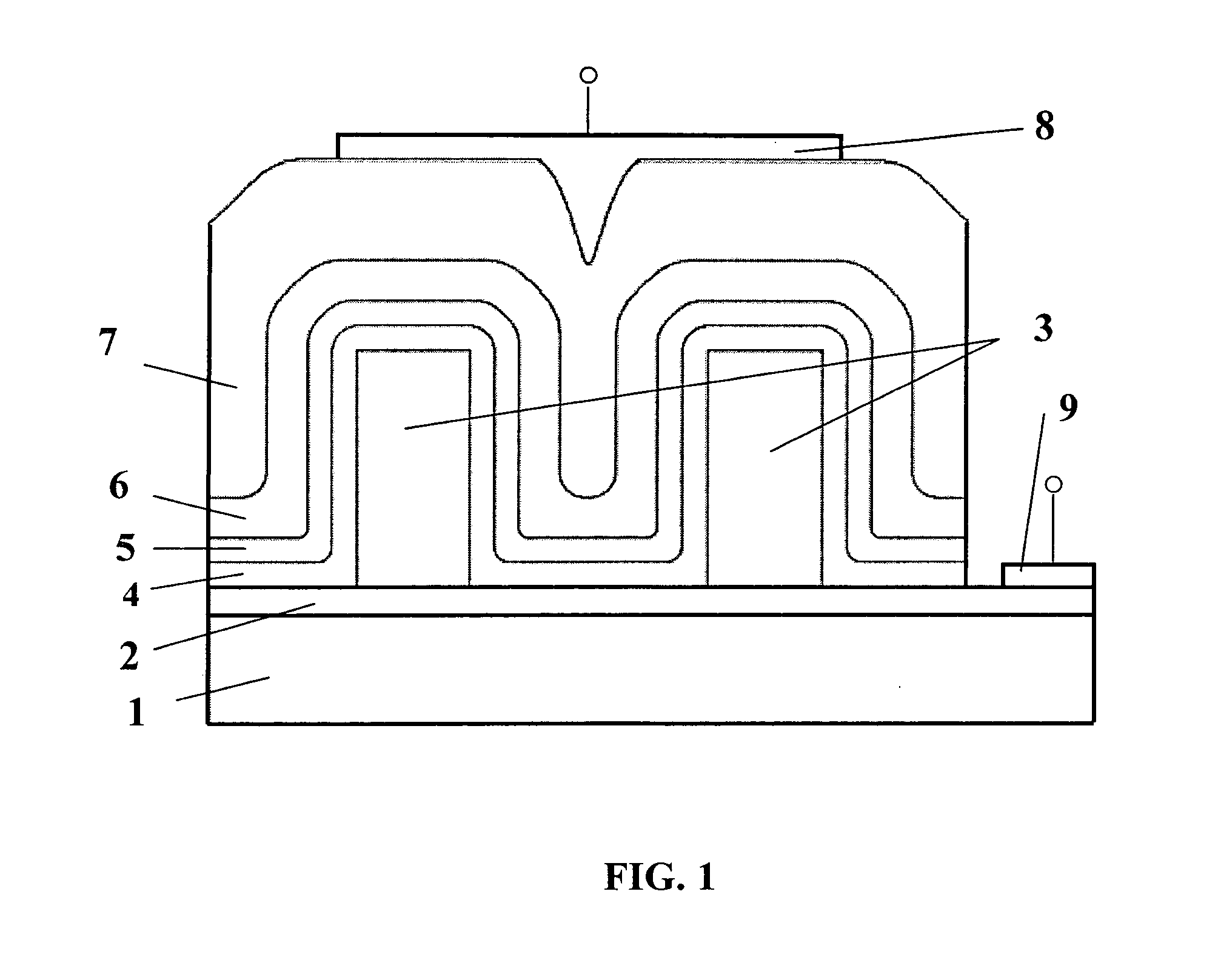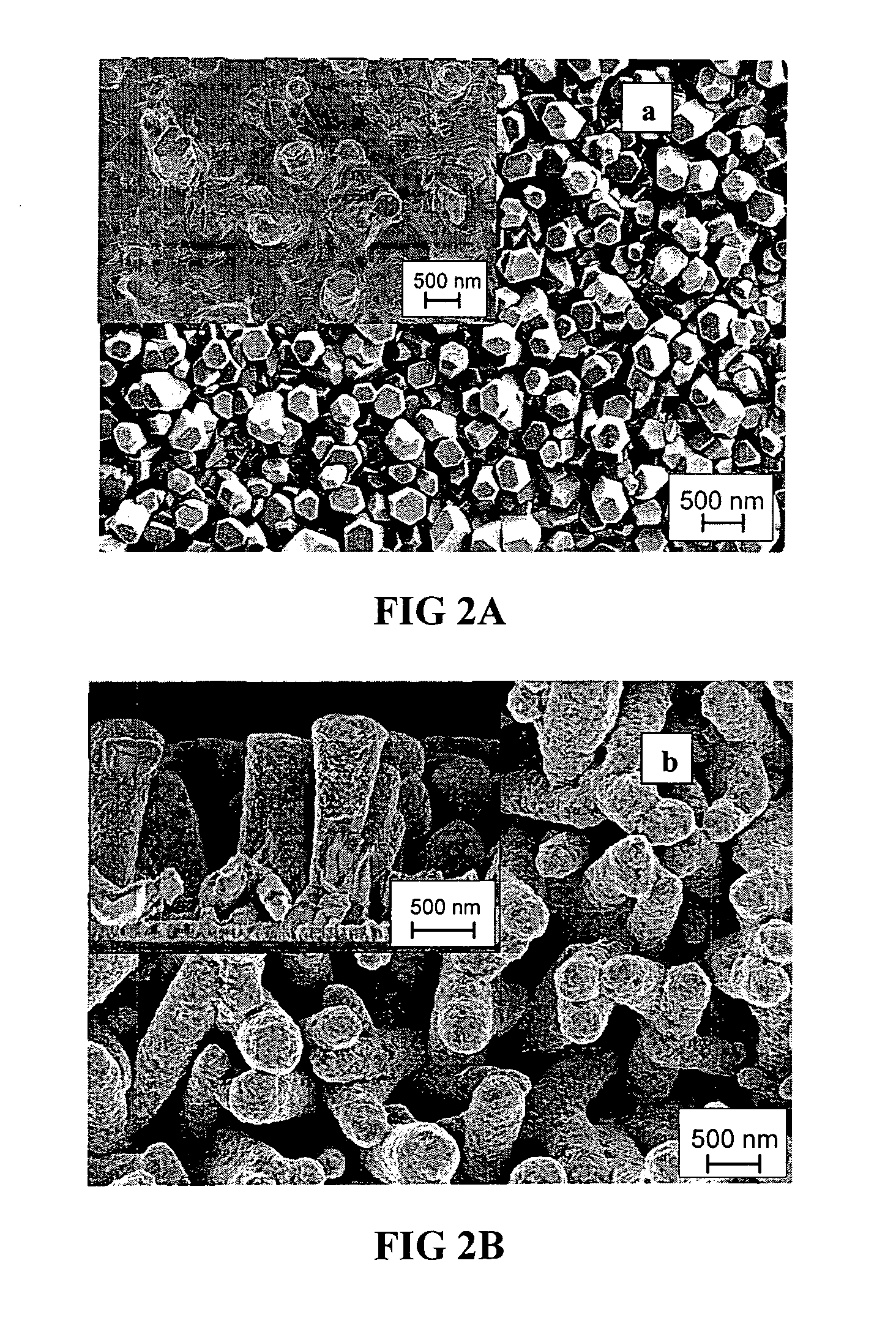Photovoltaic cell based on zinc oxide nanorods and method for making the same
a zinc oxide nanorod and photovoltaic cell technology, applied in the direction of final product manufacturing, sustainable manufacturing/processing, liquid/solution decomposition chemical coating, etc., can solve the problems of its instability and its solid-state modification
- Summary
- Abstract
- Description
- Claims
- Application Information
AI Technical Summary
Benefits of technology
Problems solved by technology
Method used
Image
Examples
example 1
[0040]Zinc oxide (ZnO) nanorods were deposited by spray of zinc chloride (ZnCl2) aqueous solution onto indium tin oxide (ITO) covered glass substrates placed on the hot plate (laboratory device developed by Tallinn University of Technology) heated up to about 600° C. The concentration of ZnCl2 in spray solution was about 0.1 mol / l. ZnO nanorod (ZnOR) layers deposition by spray technique are described in more details in our PCT application PCT / EE2006 / 000002, published as WO2006108425.
[0041]The next layers of the solar cell were deposited in the following order: a thin conductive layer of indium doped zinc oxide (ZnO:In), an extra thin blocking layer TiO2, a buffer layer In2S3 and finally, CuInS2 (CIS) absorber layer.
[0042]The conductive layer of indium-doped zinc oxide (ZnO:In) was deposited onto the ZnO nanorods at hot plate temperature of about 500° C. from about 20 ml of about 0.2 mol / l Zn(CH3COO)2 solution containing InCl3 ([In] / (Zn]=3 at %).
[0043]The extra thin blocking layer of...
example 2
[0047]Zinc oxide (ZnO) nanorods with length of about 1 micron were deposited as in Example 1.
[0048]TiO2 films were deposited by sol-gel spray pyrolysis method onto the substrate with ZnO rods using a sol composed of a titanium alkoxide (titanium (IV)isopropoxide) with concentration 0.1 mol / l and a stabilizer (acetylacetone) at molar ratio of 1:2 to 1:4 in ethanol (other alcohols may be used). The sol was pulverized onto the substrate heated up to 450° C. employing 2 to 20 spray pulses (1 second spray+30 second pause). Sprayed TiO2 films were amorphous according to Raman spectra. X-ray photoelectron spectroscopic study revealed that four spray pulses had produced a continuous and pinhole free TiO2 film with the thickness of less than 5 nm on planar surfaces.
[0049]Indium sulfide (In2S3) buffer layer and CuInS2 (CIS) absorber layer were deposited as in Example 1.
[0050]TiO2 film from 2-4 spray pulses forms a chemical blocking layer on ZnO rods resulting simultaneously in reduction of th...
example 3
[0051]Zinc oxide (ZnO) nanorod layer was deposited by spray. 50 ml of ZnCl2 aqueous solution with concentration of 0.07 mol / l with pH of 2.0-2.2 was sprayed at the rate of 2.5 ml / min onto pre-heated ITO electrode coated glass substrates kept at constant temperature of about 600-620° C. Acidity of the solution was adjusted via addition of HCl into the aqueous solution of ZnCl2. The substrates were continuously rotated to obtain uniform layers. The air was used as carrier gas with air flow rate 8 l / min.
[0052]Using acidic spray solution with pH of around 2 instead of 5 supports the formation of a layer composed of ZnO nanorods, i.e., elongated crystals instead of a compact layer of ZnO. The use of acidic solution reduces the number of ZnO nucleation centers by dissolving the smaller nucleation centers and allowing rods to grow on bigger centers without growing together. Using acidic spray solution makes the process much less dependant on the surface properties of the TCO layer and thus...
PUM
| Property | Measurement | Unit |
|---|---|---|
| thickness | aaaaa | aaaaa |
| thickness | aaaaa | aaaaa |
| thickness | aaaaa | aaaaa |
Abstract
Description
Claims
Application Information
 Login to View More
Login to View More - R&D
- Intellectual Property
- Life Sciences
- Materials
- Tech Scout
- Unparalleled Data Quality
- Higher Quality Content
- 60% Fewer Hallucinations
Browse by: Latest US Patents, China's latest patents, Technical Efficacy Thesaurus, Application Domain, Technology Topic, Popular Technical Reports.
© 2025 PatSnap. All rights reserved.Legal|Privacy policy|Modern Slavery Act Transparency Statement|Sitemap|About US| Contact US: help@patsnap.com



